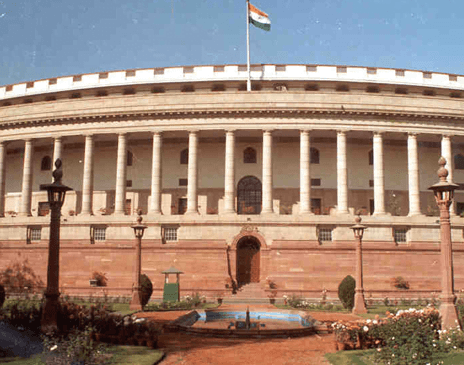22 MPs from smaller parties, independents in Rajya Sabha recognised as a consolidated bloc
Vice-President and Rajya Sabha Chairman Hamid Ansari has recognised a group of 22 MPs belonging to smaller parties and certain Independents as a consolidated bloc — the United Group.
With this recognition the United Group, will be the third largest group of MPs in the Rajya Sabha, after the Congress and the BJP.
Background
- This is only the third time in the history of Indian Parliament consolidated bloc has been recognised, the first was in 1983 and the second in 1990.
- In 1983, the first such consolidated group was called United Associations of Members was recognised by the then Rajya Sabha Chairman M.Hidayatullah.
- In 1990, the then chairman of Rajya Sabha recognised organised group of Parliamentarians and was renamed as the United Group.
What are benefits for consolidated bloc?
- The newly recognised bloc will find a place in the Business Advisory Committee (BAC) that decides time allotment. Thus, MPs of bloc will secure more time to speak in House debates.
- At present, time allotted to parties to speak on debates depends entirely on their strength in the House.
- Earlier due to their solitary or numerically lean status, members of this bloc had as little as three minutes of speech time.
- Thus, a grouping of this kind will make it possible for a party like Sikkim Democratic Front with a single MP to speak for as much time as say, a Samajwadi Party with 19 MPs in Rajya Sabha.
About Rajya Sabha
- The Council of States or Rajya Sabha is the upper house of the Parliament. It is permanent house of the Parliament and unlike the Lok Sabha it is not subject to dissolution.
- The origin of the Rajya Sabha as the second chamber can be traced to the Montague-Chelmsford Report of 1918 and the Government of India Act, 1919.
- As per Article 80 of Constitution, the maximum strength of Rajya Sabha is 250, out of which 238 are representatives of States and of two Union Territories having legislatures (Delhi and Puducherry).
- These members are indirectly elected by state and territorial legislatures using single transferable votes.
- Remaining 12 members are nominated by the President for their contributions to art, literature, science, and social services.
- Members of Rajya Sabha have six-year term and one third of the members retire every two years.
- The Vice President of India is the ex-officio Chairman of the Rajya Sabha, who presides over its sessions.
Month: Current Affairs - October, 2016


